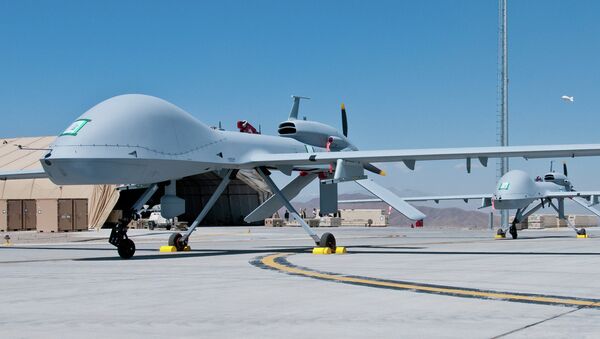The Korean Peninsula has captured the world's attention of late. While North Korea launched a ballistic missile that is in theory capable of delivering a nuclear device, the president of South Korea, Park Geun-hye, was impeached over corruption allegations, leaving the nation in the state of disarray. So why would the US send a wing of attack drones to be permanently stationed in South Korea?
According to Griffin, this step will not end in any kind of peaceful negotiations or nuclear disarmament. The US has been ramping up its military pressure on North Korea for several years, after US President Barack Obama put a stop to negotiations that took place during both Clinton and Bush Administrations.
"North Korea is doing what any rational country would do if another military is building up near its borders," Griffin says.
"This is how the US foreign policy has been for several decades now: just using its military power to interact with the rest of the world."
The unusual point about this deployment is that it has been publicly announced, something from which the US armed forces in South Korea used to refrain. This way, the deployment becomes a political message.
"The US is trying to assert its power in any way, shape and form that it can," Griffin noted.
The US is in a rush to deploy the THAAD missile defense system, as any new South Korean administration is likely to take a more negative stance towards the system, which is already extremely unpopular among Koreans.
Griffin agreed that using the North Korean threat as a pretext for ramping up military presence is actually quite a stretch from reality.
"The United States has been threatening Korea with nuclear warfare even before the [1950-1953] Korean War happened," Griffin underscored.
In fact, Washington's military spending so outweighs that of Pyongyang, there is hardly any way North Korea can pose a substantial threat to the United States.
"I don't think it's that Americans don't care," Griffin speculated.
"I think Americans don't know we have 38,000+ troops located in South Korea, missile defenses all across Asia, 800 military bases — but if they do begin to know these things, there might be a chance that we de-escalate these tensions," he said.
"There's really no military that has a chance against the US outside. The only way that we can actually de-escalate these tensions is for the American public to understand the situation, it has to come from within," Griffin added.



